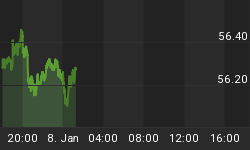8/30/2010 9:18:55 AM
The major indexes followed the Russell-2000 as it rallied strongly after a retest lower...
Recommendation:
Take no action.
Daily Trend Indications:

- Positions indicated as Green are Long positions and those indicated as Red are short positions.
- The State of the Market is used to determine how you should trade. A trending market can ignore support and resistance levels and maintain its direction longer than most traders think it will.
- The BIAS is used to determine how aggressive or defensive you should be with a position. If the BIAS is Bullish but the market is in a Trading state, you might enter a short trade to take advantage of a reversal off of resistance. The BIAS tells you to exit that trade on "weaker" signals than you might otherwise trade on as the market is predisposed to move in the direction of BIAS.
- At Risk is generally neutral represented by "-". When it is "Bullish" or "Bearish" it warns of a potential change in the BIAS.
- The Moving Averages are noted as they are important signposts used by the Chartists community in determining the relative health of the markets.
Current ETF positions are:
In Cash.
Daily Trading Action
The major index ETFs opened higher and tested down to recent lows in the first half hour of trading before reversing higher. That reversal was significant with gains of more than one percent on the day. The Russell-2000 (IWM 61.65 +1.57) led the way higher as it never reached the level of recent lows before moving higher and closing with gains of +2.6%! The Semiconductor Index (SOX 321.76 +6.53) gained 2.1% as it tested to a new low before reversing at its 400-Day Moving Average. The Bank Index (KBE 21.91 +0.46) gained more than two percent as did the Regional Bank Index (KRE 21.71 +0.50). With the exception of the Russell-2000, all equity indexes remain in downtrend states with all equity indexes having a BEARISH BIAS. In contrast, the 20+ Yr Bonds (TLT 105.35 -3.07) fell -2.8% and moved into a trading state. NYSE volume remained light with 1.088B shares traded. NASDAQ share volume increased to average with 2.131B shares traded.
There were three economic reports of interest released:
- GDP-revised (Q2) came out at 1.6% versus an expected 1.4%
- GDP Deflator-revised (Q2) came out at 1.9% versus an expected 1.8%
- UofMichigan Consumer Sentiment (Aug) came in at 68.9 versus an expected 70.0
The first two reports were released an hour before the open and the UofMich report came out twenty-five minutes into the session. The revised Q2 GDP report suggests that the economy, though tepid, isn't as bad as feared and the Deflator suggests that deflation is less of a concern than feared as well. Consumer sentiment came out worse than expected but only modestly so.
The day was all about an oversold bounce.
All ten economic sectors in the S&P-500 moved higher led by Materials (+2.9%).
Implied volatility for the S&P-500 (VIX 24.45 -2.91) fell more than ten percent and implied volatility for the NASDAQ-100 (VXN 26.31 -2.63) fell by nine percent.
The yield for the 10-year note rose nine basis points to close at 2.59. The price of the near term futures contract for a barrel of crude oil rose $2.81 to close at $75.17.
Market internals were positive with advancers leading decliners nearly 7:1 on the NYSE and by nearly 5:1 on the NASDAQ. Up volume led down volume 11:1 on both the NYSE and the NASDAQ. The index put/call ratio fell 0.05 to close at 1.07. The equity put/call ratio fell 0.10 to close at 0.57.
Commentary:
Friday's trading was all about an oversold bounce. With the Russell-2000 never moving low enough to retest its lows and moving into a trading state, the bulls are determined to turn things around. All but the major indexes looked pretty bullish on the move higher. The major indexes seemed to reluctantly follow, although they didn't recover losses from last week's move lower yet.
With up volume leading down volume by 11:1, follow-through to Friday's rally will be looked for as a sign of a short term bottom. Overall volume wasn't really convincing as NYSE volume wasn't that much more than one billion shares and NASDAQ volume was on the low-end of average (adjusting for the light summer months). We would like to see follow-through before moving from our cash position or get an attractive entry to take a position.
We hope you have enjoyed this edition of the McMillan portfolio. You may send comments to mark@stockbarometer.com.
















